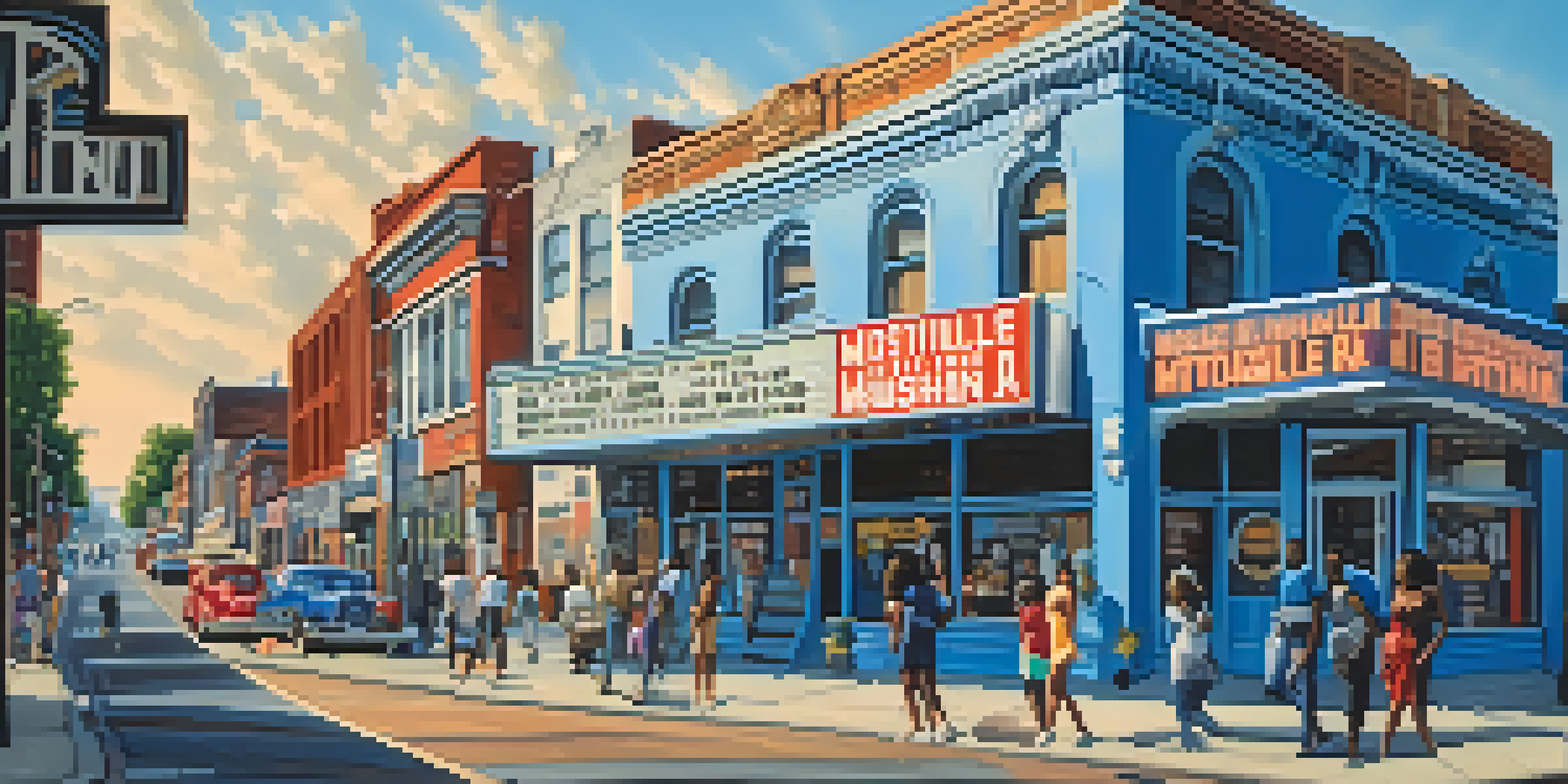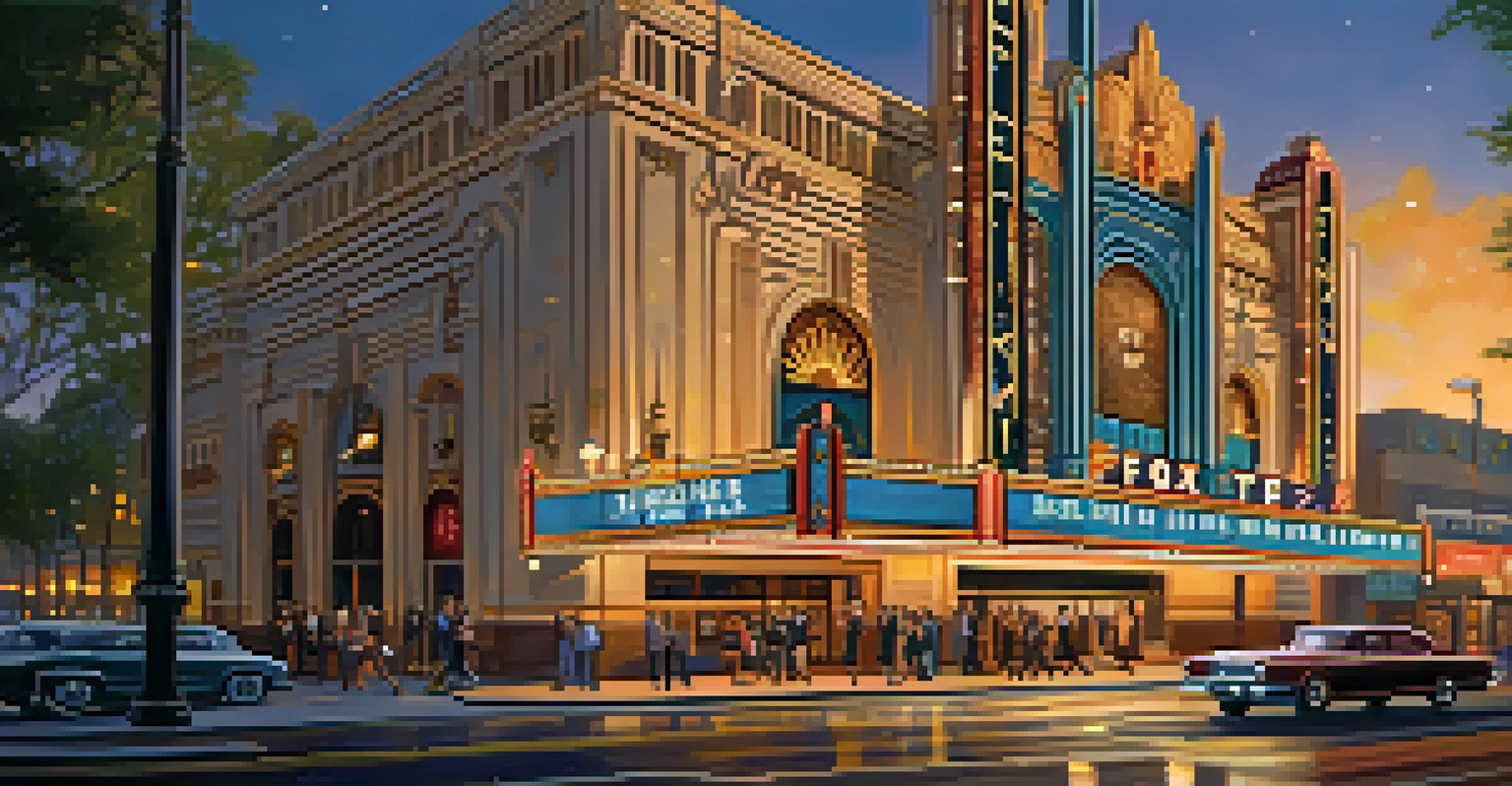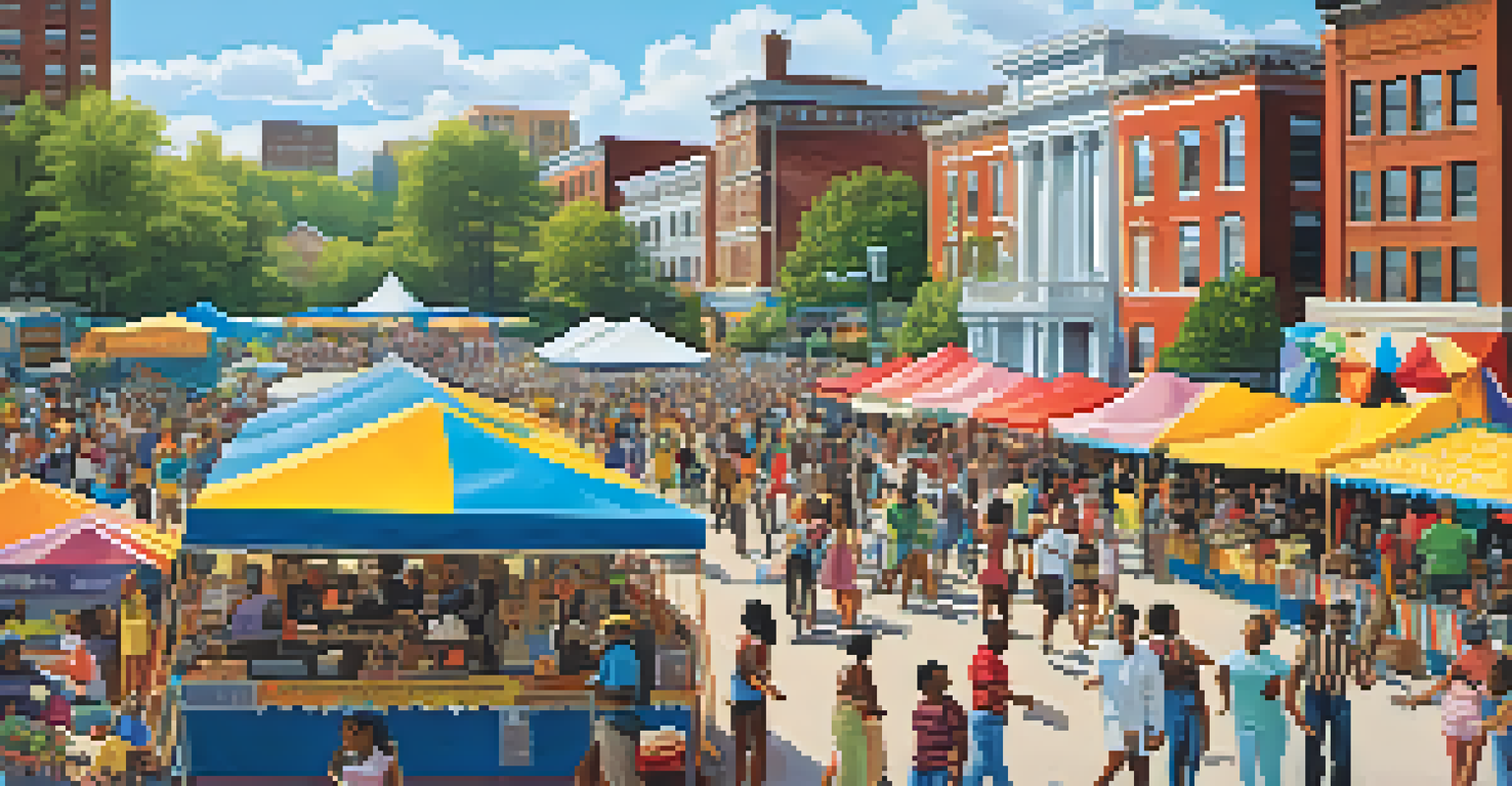The Impact of Motown on Detroit's Architectural Scene

The Birth of Motown: A Cultural Revolution Begins
In the late 1950s, Motown Records emerged in Detroit, becoming a beacon of cultural change. Founded by Berry Gordy Jr., it not only revolutionized music but also influenced the very fabric of the city. The Motown sound, characterized by its catchy melodies and soulful rhythms, resonated with a broad audience, leading to a cultural renaissance in Detroit.
Music is the soundtrack of your life.
As Motown artists like The Supremes and Marvin Gaye rose to stardom, they brought attention to Detroit, attracting fans and tourists alike. This influx of visitors sparked interest in the city’s architecture, leading to a wave of renovations and new developments. The intersection of music and urban development began to reshape how Detroit was perceived both locally and nationally.
Motown's impact went beyond just music; it inspired a sense of pride among Detroiters. As the community rallied around this iconic label, the desire to enhance and celebrate the city’s architectural identity grew stronger. This cultural movement fostered a unique blend of creativity that would leave a lasting mark on Detroit's skyline.
Architectural Landmarks Linked to Motown's Legacy
Key architectural sites in Detroit, such as the Motown Museum, serve as a testament to the label's enduring legacy. Located in the original Hitsville U.S.A. building, this museum not only showcases the history of Motown but also highlights the importance of preservation in urban architecture. Visitors can see firsthand how the space where legendary artists recorded has been maintained.

Additionally, the Fox Theatre stands as a symbol of Detroit's rich cultural tapestry, hosting countless Motown performances. Its stunning Art Deco design draws architectural enthusiasts and music lovers alike, showcasing the city's ability to blend historical elegance with modern vibrancy. The Fox Theatre is a great example of how music venues contribute to the architectural landscape.
Motown Transformed Detroit's Identity
The rise of Motown Records not only revolutionized music but also played a crucial role in reshaping Detroit's cultural and architectural landscape.
These landmarks demonstrate that Motown's influence extended beyond music; they played a crucial role in shaping Detroit's identity. As these buildings attract attention, they inspire new architectural projects, creating a dialogue between past and present. The architectural narrative of Detroit is deeply intertwined with its musical history, making it a unique case study in urban development.
Revitalization through Music and Architecture
In recent years, Detroit has undergone significant revitalization, much of which can be traced back to its musical roots. The resurgence of interest in Motown has spurred efforts to renovate historic buildings, transforming them into cultural hubs. This revitalization also encourages the community to engage with their architectural heritage, fostering a sense of belonging.
Architecture is the reaching out for the truth.
As new businesses and residential projects arise, they often pay homage to the Motown era, incorporating design elements that reflect the city’s musical legacy. This blending of old and new architecture creates a vibrant atmosphere that attracts residents and tourists alike. It's a beautiful example of how music can inspire architectural creativity.
Furthermore, events celebrating Motown music are frequently held in revitalized spaces, drawing crowds and fostering community interaction. These gatherings not only highlight the significance of Motown in Detroit's history but also promote the importance of preserving architectural heritage. The result is a city that honors its past while looking forward to a bright future.
Motown's Influence on Modern Detroit Architects
Today's architects in Detroit often draw inspiration from the Motown era, seeking to capture its essence in contemporary designs. This influence can be seen in various projects, from music venues to public spaces that celebrate the city’s rich musical heritage. The challenge for architects is to create structures that resonate with the spirit of Motown while meeting modern needs.
For instance, some architects incorporate colors and design elements reminiscent of the vibrant album covers and fashion of the Motown era. This approach not only honors the past but also creates a dialogue with current and future generations. The interplay between architectural design and musical heritage is an exciting aspect of Detroit's evolving landscape.
Public Art Enriches Motown Legacy
Murals and sculptures honoring Motown artists enhance the city’s architectural scene while fostering community pride and engagement.
Moreover, many architects are committed to community involvement, ensuring that the voices of Detroiters are heard in the design process. This collaborative approach helps create spaces that reflect the city's identity and resonate with its musical roots. As a result, the architectural scene in Detroit continues to thrive, fueled by Motown’s lasting impact.
The Role of Public Art in Detroit's Motown Narrative
Public art plays a significant role in telling Detroit's Motown story, enriching the city’s architectural landscape. Murals, sculptures, and installations dedicated to Motown artists can be found throughout Detroit, creating vibrant visual narratives that celebrate the city's musical heritage. These art pieces do more than beautify; they educate and inspire community pride.
Many of these public artworks are strategically placed near historical sites, creating a cohesive experience for residents and visitors. For example, murals of Motown legends adorn walls close to the Motown Museum, linking the past with the present. This blend of art and architecture fosters a sense of connection to the city’s roots.
Additionally, public art initiatives often involve local artists, making the projects a community effort. By engaging local talent, these initiatives not only honor Motown’s legacy but also support the growth of Detroit’s creative economy. In this way, public art serves as a bridge between the architectural scene and the cultural narrative of Motown.
Cultural Festivals: Celebrating Motown's Architectural Impact
Detroit hosts various cultural festivals that celebrate Motown music and its architectural significance, attracting thousands each year. Events like the Detroit Music Festival showcase not only the music but also the city's historical sites, encouraging attendees to explore the architectural gems that have shaped its identity. These festivals create a lively atmosphere where music and architecture intersect.
During these celebrations, guided tours often highlight the architectural history of Motown landmarks, educating participants about their significance. This blend of entertainment and education fosters a deeper appreciation for Detroit’s architectural evolution. As attendees walk through the city, they witness firsthand how music has influenced the design of spaces and buildings.
Festivals Celebrate Music and Architecture
Cultural festivals in Detroit highlight the intersection of Motown music and architectural heritage, promoting appreciation for the city's historical sites.
Moreover, these festivals foster community engagement, allowing residents to share their stories and experiences related to Motown. This personal connection to the architecture reinforces the idea that buildings are not just structures; they are vessels of memory and culture. The celebration of Motown through festivals highlights the ongoing dialogue between music and architecture in Detroit.
The Future of Motown and Detroit's Architectural Scene
As Detroit continues to evolve, the influence of Motown remains a guiding force in its architectural landscape. New developments and revitalization projects often seek to capture the essence of the Motown era, ensuring that its legacy lives on in modern designs. This commitment to honoring the past while embracing innovation creates a unique architectural narrative.
Looking ahead, architects and city planners are increasingly focused on sustainability, integrating eco-friendly practices into their designs. This shift not only honors the spirit of Motown by promoting community engagement but also addresses contemporary environmental challenges. The future of Detroit’s architecture will likely continue to intertwine with its rich musical heritage.

Ultimately, the impact of Motown on Detroit's architectural scene is a story of resilience, creativity, and community. As new generations discover the magic of Motown, they will undoubtedly shape the city’s future, ensuring that its architectural legacy remains vibrant and relevant. The dance between music and architecture in Detroit is poised to continue, creating a dynamic cultural landscape.